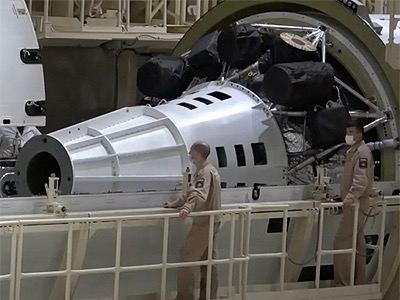The Russian upper stage Perseus with a mock-up of a satellite entered the atmosphere over the central Pacific Ocean on January 6 at 01:08 Moscow time, according to the website of the American space forces Space-track.org . The upper stage could not bring the payload simulator into geostationary orbit — the first flight of the device created at RSC Energia ended in failure.
Perseus is an upgraded version of the DM-03 block, which, along with the "Breeze" developed by the Khrunichev Center, was used on Proton-M missiles. The upper stages are necessary for launching satellites from low Earth orbit to departure trajectories to other planets or to a geostationary orbit with a height of about 36 thousand kilometers. Perseus received a new control system and a pneumohydraulic system, as well as enlarged fuel tanks.
The Perseus block and the inseparable satellite model were put into orbit by the Angara heavy rocket, which launched from the Plesetsk cosmodrome on December 27, 2021. The launch was carried out by the Russian Military Space Forces. The launch vehicle worked normally, and 12 minutes after the launch, the Perseus with the payload layout separated from the third stage of the launch vehicle. Next, Perseus was supposed to put the mock-up of the satellite into a geostationary orbit with a height of about 36 thousand kilometers according to a typical nine-hour three-pulse scheme with four turns on the main engine.
According to Space-track.org, the upper stage together with the layout did not enter geostationary orbit, but remained in low Earth orbit with a perigee height of 177 kilometers and an apogee of 200 kilometers. The US military found four objects in orbit after the launch of the Angara: the upper stage itself with a layout (catalog number NORAD 50505) and three other small fragments of space debris, one of which entered the atmosphere back in December 2021.
Persei stage now expected to reenter between 1800 and 2200 UTC. Here is the height vs time - object A (blue) is the main, dense object. Objects B, C and D have already reentered pic.twitter.com/hWpnjBoIlv
— Jonathan McDowell (@planet4589) January 5, 2022
The orbit of object 50505 was rapidly decreasing, and on January 6, at 01:08 Moscow time, the spacecraft entered the atmosphere over a point with coordinates of 13.7 degrees south latitude and 239.2 degrees east longitude. This point is located in the central Pacific Ocean, 1,590 kilometers southeast of Pitcairn Island.
The Ministry of Defense of the Russian Federation, Roscosmos and RSC Energia have not given any information about the fate of the upper stage and the satellite layout since the launch of Angara.
Earlier we talked about how at the end of December 2021, the Russian inspector satellite Kosmos-2519 descended from orbit . Read more about the threats that spent satellites and rocket stages can create in our material "Garbage Belt" .
Sergey Kuznetsov

